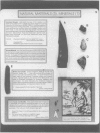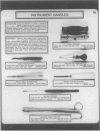Abstract
Man's failure to extract deeply embedded thorns and arrowheads, with bare hands and teeth, stimulated 'instrument substitutes' mimicking these appendages. Evidence from primitive communities suggest animal, plant and mineral items were employed, both before and after metal became the standard material of today's armamentarium. Changing surgical instrument composition has mirrored concurrent technology and manufacturing methods both of which are reviewed. Particular significance is accorded flint, bronze, crucible steel, thermal sterilisation, nickel-plate, stainless steel and disposable plastics. The paper is based on an exhibition From Flint to Stainless Steel on display at the College.
Full text
PDF









Images in this article
Selected References
These references are in PubMed. This may not be the complete list of references from this article.
- Kirkup J. R. The history and evolution of surgical instruments. II Origins: function: carriage: manufacture. Ann R Coll Surg Engl. 1982 Mar;64(2):125–132. [PMC free article] [PubMed] [Google Scholar]
- SMYTH E. H. The mechanical problem of the artificial hip. J Bone Joint Surg Br. 1958 Nov;40-B(4):778–798. doi: 10.1302/0301-620X.40B4.778. [DOI] [PubMed] [Google Scholar]







